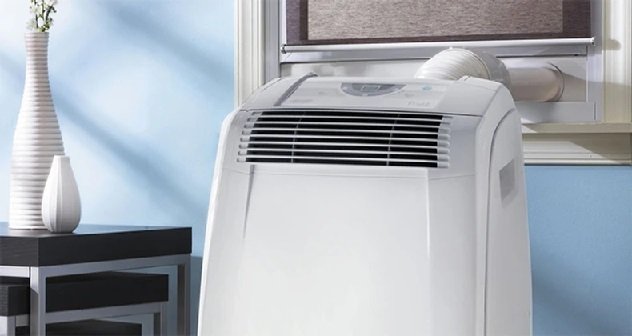When you only need cooling on occasion, a mobile device, such as a portable air conditioner or evaporative cooler, is the best option. They are convenient for use in a single room and can be quickly stashed away during the winter months as well as other times of the year.
Evaporative coolers are more efficient than refrigerant-based coolers because they work by passing air through a fine “curtain” of water, which subsequently evaporates and brings about a cooling effect. This process allows evaporative coolers to consume significantly less energy. They require a supply of dry air, and the resulting “moist” air must be vented at the opposite end of the room from where it entered.
In hot, dry climes like Australia’s, this strategy is excellent; but, in the United Kingdom, the humidity levels can be too high, and cross ventilation can be too impractical for any true cooling to take place.
Even though they consume more power, air conditioners that use refrigerants provide the most effective cooling. Your best bet is to check into purchasing one of them.
Comparing the Benefits and Drawbacks of Portable Air Conditioners
The fact that a portable air conditioning unit can be easily transported from one room to another utilised whenever as well as wherever it is necessary, and at a significantly lesser cost than the installation of an air conditioning system are the key advantages of using a portable air conditioning unit rather than a fixed system that cools the entire house.
On the other side, portable air con systems have a greater propensity to make more noise than those that are permanently installed. You’ll also need to keep the window open in order to vent the ensuing heat, which creates a potential security risk and may prevent you from getting a good night’s sleep because of the chance of noise.
It is crucial to bear in mind that due to the weather in the UK, evaporative coolers might not be the best solution.
Air Conditioning Systems Have Been Installed
In most cases, the systems that are installed consist of an exterior unit that contains a fan. After that, two insulated pipes that are filled with refrigerant are used to connect the fan to an indoor unit. (The diameter of the pipes, with the insulating layer included, is approximately 28 millimetres.)
The indoor units are offered in a variety of configurations, including the following:
- The high wall unit is a bulk-head that is mounted on the wall as well as its dimensions are about equivalent to those of a couple of shoe boxes.
- Low wall units provide an appearance that is comparable to that of ordinary radiators.
- Mounting brackets for ceiling cassettes are often installed in the ceiling at the room’s geographic centre.
It is usual practise in many hotels to install more discrete slim-ducted units in the ceiling or put them in grilled boxes above cupboards or near doors. Another option is to locate them in the floor.

